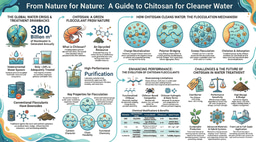Health impacts of air pollution using novel satellite data
Published in Earth & Environment and Ecology & Evolution

Air pollution accounts for 12% of total global deaths. Multiple studies have linked exposure to fine particulate matter (PM2.5) to increased mortality and morbidity, but research has been concentrated among wealthy countries with reliable public health statistics and dense air pollution monitoring networks. New data collection techniques, such as remote sensing, allow us to investigate the effect of air pollution on mortality over wide geographical areas and with high granularity. Emerging satellite imagery public datasets improve our ability to measure exposure to air pollution, which historically has been done using ground monitoring stations with limited coverage.
Recently published in Communications Earth & Environment, our study leverages satellite PM2.5 and land temperature data at a 1km resolution, along with population estimates and information from death certificates, to evaluate the effect of air pollution on elderly mortality in Chile. We do this with complete spatial coverage of the entire country over 18 years (2002 to 2019) at a monthly level. We find that increases of monthly PM2.5 concentration of 10 µg/m3 (a common metric to report air pollution risks) is associated with an increase in short-term (monthly) elderly mortality (75 years or older) of 1.7% (95% C.I.: 1.1-2.4%). To put that number in context, if Chile had met the World Health Organization (WHO) air pollution guidelines for PM2.5 pollution during the period 2002-2019, over 25,000 premature deaths could have been avoided. This corresponds to over 3% of total elderly deaths in that period.
Our motivations to conduct this study were to empirically assess the effect of air pollution on mortality in Chile, middle-income country in South America with higher levels of pollution than other developed countries, and to study the heterogeneity in its effects. A big advantage of satellite-based data, which we validate using PM2.5 data from over 50 ground monitors across Chile, is its complete spatial and temporal coverage. This allows us to study differences in effects in urban versus rural areas, over income levels, over time and by region. We find that the effects of air pollution on elderly mortality are similar across all characteristics we tested, highlighting the consistency of the effects. Our analysis reveals that the most notable source of heterogeneity is geographical; the center-south of Chile, with higher baseline levels of PM2.5 pollution, have a consistently larger effect of around a 5% increase in mortality for a 10 µg/m3 increase in PM2.5 monthly concentration.
These findings are valuable to the scientific community to better understand the heterogeneous effect of air pollution, and for policy makers to promote clean air regulations to prevent premature mortality. Our approach illustrates the potential of using satellite-based measurements of PM2.5 to study the effect of air pollution on health outcomes, which could be particularly valuable in developing countries that lack a comprehensive network of ground monitors, and where air pollution is a growing public health concern.
Follow the Topic
-
Communications Earth & Environment

An open access journal from Nature Portfolio that publishes high-quality research, reviews and commentary in the Earth, environmental and planetary sciences.
Related Collections
With Collections, you can get published faster and increase your visibility.
Geology of the Moon
Publishing Model: Hybrid
Deadline: Jan 31, 2026
Drought
Publishing Model: Hybrid
Deadline: Dec 31, 2025



Please sign in or register for FREE
If you are a registered user on Research Communities by Springer Nature, please sign in